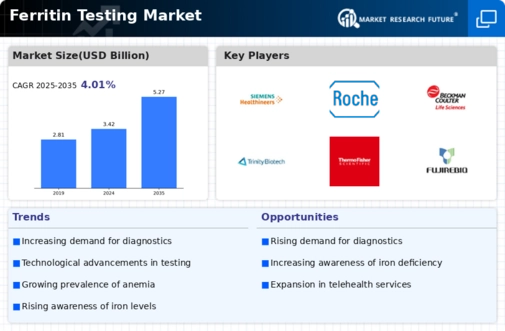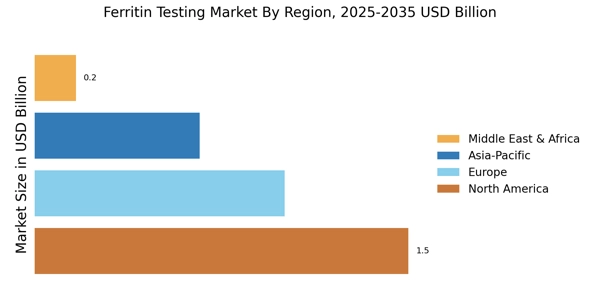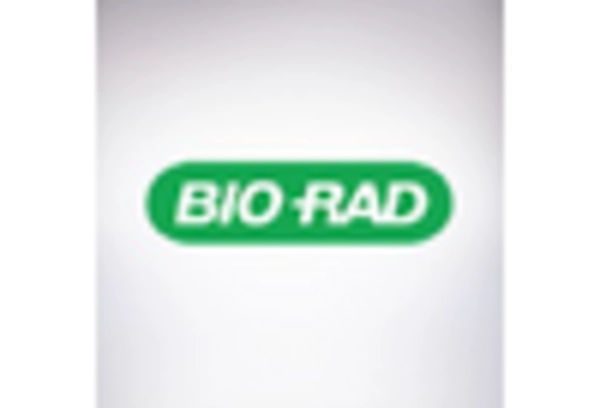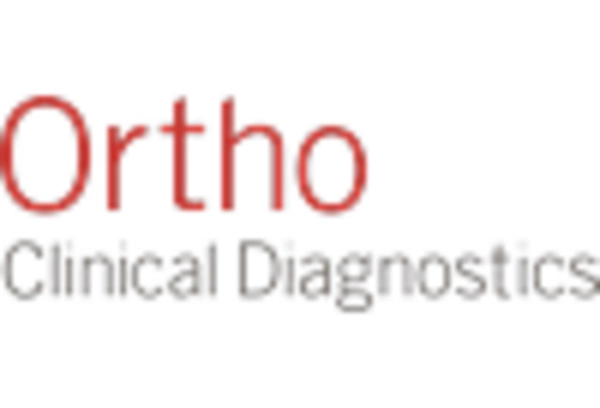Rising Prevalence of Anemia
The increasing prevalence of anemia, particularly iron deficiency anemia, is a primary driver for the Ferritin Testing Market. Anemia affects millions worldwide, with estimates suggesting that approximately 1.62 billion people are anemic. This condition often results from inadequate iron levels, making ferritin testing essential for diagnosis and management. As healthcare providers emphasize early detection and treatment, the demand for ferritin testing is likely to rise. Furthermore, the World Health Organization has highlighted the need for improved diagnostic tools to combat anemia, which may further bolster the Ferritin Testing Market. The growing recognition of anemia's impact on public health is expected to drive investments in ferritin testing technologies, thereby enhancing market growth.
Growing Geriatric Population
The aging population is a crucial factor driving the Ferritin Testing Market. As individuals age, the risk of developing iron-related disorders, including anemia, increases. The United Nations projects that the number of people aged 60 and older will reach 2.1 billion by 2050, highlighting the need for effective health monitoring. This demographic shift necessitates regular health assessments, including ferritin testing, to manage iron levels and prevent complications. Healthcare systems are increasingly focusing on geriatric care, which may lead to a rise in the adoption of ferritin testing as part of routine evaluations. Consequently, the Ferritin Testing Market is likely to experience growth as healthcare providers adapt to the needs of an aging population.
Increased Focus on Preventive Healthcare
The shift towards preventive healthcare is significantly influencing the Ferritin Testing Market. As individuals become more health-conscious, there is a growing demand for routine health screenings, including ferritin tests. Preventive measures are increasingly recognized as vital for reducing healthcare costs and improving quality of life. According to recent data, preventive healthcare can save up to 30% in healthcare costs by avoiding more severe health issues. This trend is likely to encourage healthcare providers to incorporate ferritin testing into regular health assessments, thereby expanding the market. Additionally, the emphasis on personalized medicine may lead to more targeted testing, further driving the Ferritin Testing Market as patients seek tailored health solutions.
Rising Awareness of Nutritional Deficiencies
The growing awareness of nutritional deficiencies, particularly iron deficiency, is significantly impacting the Ferritin Testing Market. Public health campaigns and educational initiatives are increasingly informing individuals about the importance of maintaining adequate iron levels. This heightened awareness is likely to lead to more individuals seeking ferritin testing to assess their iron status. Recent studies indicate that a substantial portion of the population is unaware of their iron levels, which can lead to serious health issues. As awareness continues to rise, healthcare providers may see an uptick in requests for ferritin testing, thereby driving market growth. The Ferritin Testing Market stands to benefit from this trend as more individuals prioritize their nutritional health.
Technological Innovations in Diagnostic Tools
Technological advancements in diagnostic tools are reshaping the Ferritin Testing Market. Innovations such as point-of-care testing and automated laboratory systems enhance the accuracy and efficiency of ferritin testing. These advancements not only improve patient outcomes but also streamline laboratory workflows, making testing more accessible. The market for point-of-care testing is projected to grow significantly, with estimates indicating a compound annual growth rate of over 10% in the coming years. As healthcare facilities adopt these technologies, the demand for ferritin testing is expected to increase, reflecting a broader trend towards rapid and reliable diagnostic solutions. This evolution in testing methodologies is likely to propel the Ferritin Testing Market forward.


















Leave a Comment